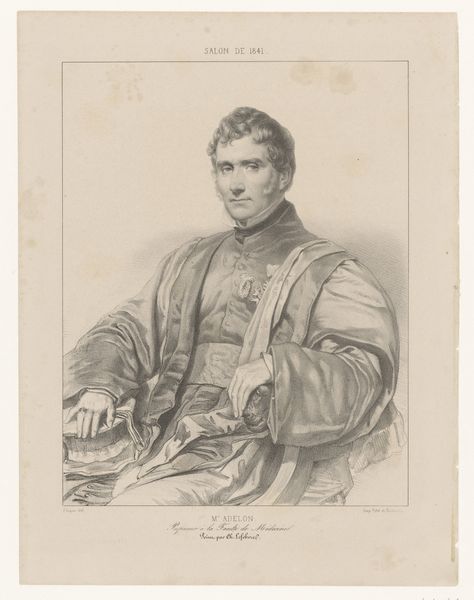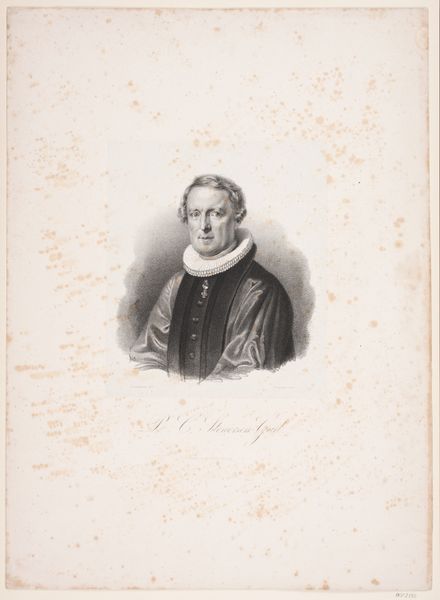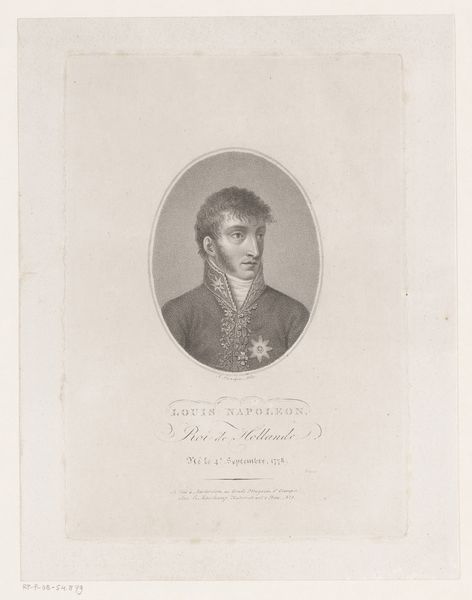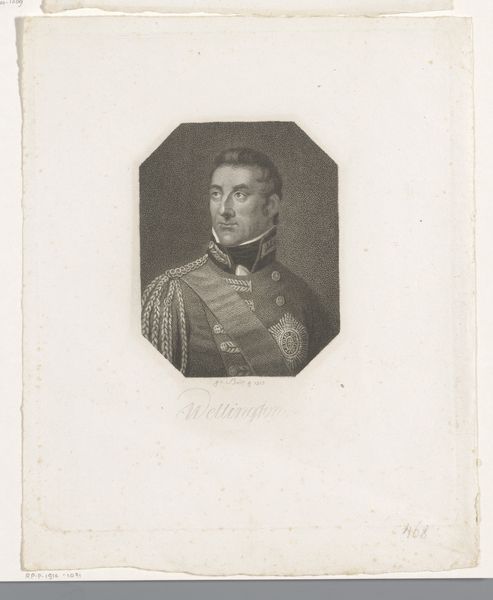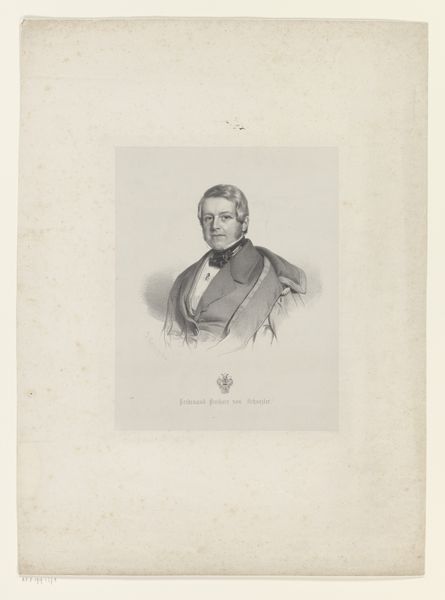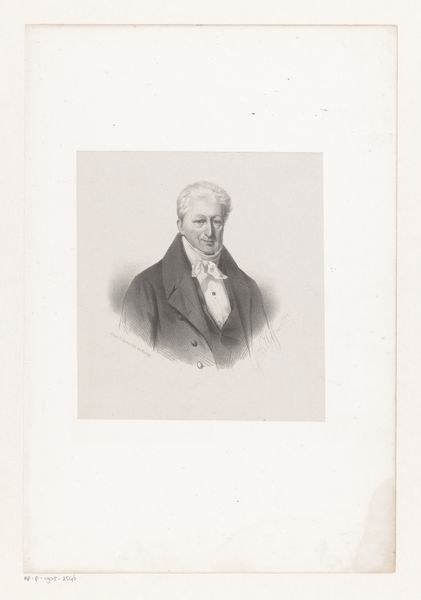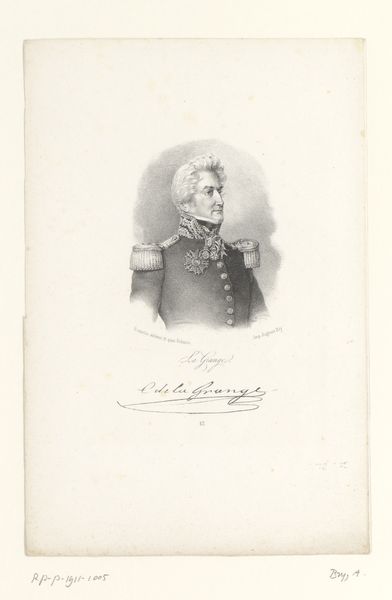
drawing, pencil, graphite
#
portrait
#
pencil drawn
#
drawing
#
pencil sketch
#
romanticism
#
pencil
#
graphite
#
realism
Dimensions: height 540 mm, width 347 mm
Copyright: Rijks Museum: Open Domain
Editor: So, this is Franz Eybl's "Portrait of Johann Ladislaus Pyrker," created in 1844 using pencil and graphite. It strikes me as very formal and composed, befitting what looks to be a high-ranking religious figure. What does this portrait reveal to you? Curator: Well, this portrait, beyond its realism, speaks volumes about the subject's status and the social function of portraiture at the time. Pyrker was a prominent religious figure, and Eybl's work served to cement his public image. How do you think the setting—or lack thereof—contributes to this portrayal? Editor: It’s interesting that you bring that up. With such a bare background, the emphasis really is directed toward his face, his clothing, the cross… the symbols of his office. Curator: Precisely. The detail given to his vestments and accoutrements underscores his authority. Consider how museums themselves contribute to that same effect today—think about how we decide to display and contextualize art. The Rijksmuseum presenting this drawing bestows another layer of importance onto Pyrker. Editor: That’s a great point. The museum legitimizes its cultural value. Were these sorts of portraits widely accessible to the public at the time? Curator: Often these images circulated through printed reproductions. This increased Pyrker’s visibility and solidified his presence in the collective consciousness. Also, note the use of pencil, a more accessible and reproducible medium than oil paint. How does that change our understanding of the work? Editor: That makes so much sense! It’s less about owning the original artwork, and more about distributing the *image* of power and status. The choice of graphite feels less about artistic expression, and more about creating an easily distributed political artifact. Curator: Exactly. It makes me consider the function of portraits, like this one, and how they were integral in constructing public identities and perpetuating societal norms. It also makes me consider which narratives the Rijksmuseum is now curating and continuing by sharing this work with the public. Editor: It’s really made me think about art's broader role, past and present. Thank you! Curator: My pleasure! It’s rewarding to explore how a single image connects to such broader themes.
Comments
No comments
Be the first to comment and join the conversation on the ultimate creative platform.
